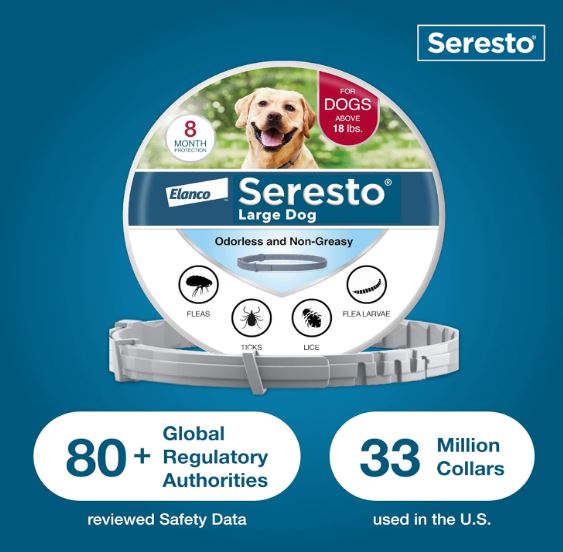Is Your Dog Scratching Due to Fleas? Effective Treatment Options

Is Your Dog Scratching Due to Fleas? Effective Treatment Options
-
Table of Contents
Introduction
Is Your Dog Scratching Due to Fleas? Effective Treatment Options
If you’ve noticed your dog scratching more than usual, it could be a sign of a flea infestation. Fleas are a common problem for dogs, especially during the warmer months. Fortunately, there are several effective treatment options available to help alleviate your dog’s discomfort and get rid of the fleas for good. In this article, we will discuss the signs of a flea infestation, as well as the best treatment options to help your furry friend find relief.
Top Flea Treatment Options for Dogs
If you’ve noticed your furry friend scratching more than usual, it could be a sign that they have fleas. Fleas are a common nuisance for dogs, causing itching, discomfort, and even skin infections if left untreated. Fortunately, there are several effective treatment options available to help rid your pup of these pesky parasites.
One of the most popular flea treatment options for dogs is topical flea medication. These medications are applied directly to your dog’s skin, usually between the shoulder blades, and work to kill fleas on contact. Topical flea medications are easy to use and provide long-lasting protection against fleas. Some popular brands include Frontline, Advantage, and K9 Advantix.
Another effective flea treatment option for dogs is oral flea medication. These medications come in the form of chewable tablets or pills and work by killing fleas when they bite your dog. Oral flea medications are convenient and easy to administer, making them a popular choice for pet owners. Some common oral flea medications for dogs include Comfortis, NexGard, and Bravecto.
In addition to topical and oral flea medications, flea collars are another popular treatment option for dogs. Flea collars work by releasing chemicals that repel and kill fleas on your dog’s fur. Flea collars are easy to use and provide continuous protection against fleas for several months. Some popular flea collar brands include Seresto and Hartz.
If your dog has a severe flea infestation, you may need to use a combination of treatment options to effectively eliminate the fleas. In addition to using topical or oral flea medications and flea collars, you may also need to treat your home and yard to prevent reinfestation. Vacuuming regularly, washing your dog’s bedding, and using flea sprays or foggers can help eliminate fleas in your home.
It’s important to consult with your veterinarian before starting any flea treatment regimen for your dog. Your vet can recommend the best treatment options based on your dog’s age, weight, and overall health. They can also provide guidance on how to safely administer flea medications and monitor your dog for any potential side effects.
In conclusion, if your dog is scratching due to fleas, there are several effective treatment options available to help alleviate their discomfort. Topical flea medications, oral flea medications, and flea collars are all popular choices for treating fleas on dogs. By consulting with your veterinarian and following their recommendations, you can effectively eliminate fleas and keep your furry friend happy and healthy.
Common Symptoms of Flea Allergies in Dogs

If you’ve noticed your dog scratching more than usual, it could be a sign of flea allergies. Fleas are a common problem for dogs, especially during the warmer months when they are more active. Flea allergies can cause your dog to itch and scratch excessively, leading to discomfort and potential skin infections. It’s important to recognize the symptoms of flea allergies in dogs so you can provide effective treatment options.
One of the most common symptoms of flea allergies in dogs is excessive scratching. If you notice your dog constantly scratching, biting, or licking their skin, it could be a sign of fleas. Fleas are tiny parasites that feed on your dog’s blood, causing irritation and discomfort. In some cases, you may even be able to see the fleas on your dog’s skin or in their fur.

Another common symptom of flea allergies in dogs is red, inflamed skin. Flea bites can cause an allergic reaction in some dogs, leading to redness, swelling, and irritation. If you notice your dog’s skin looking red or irritated, especially around their neck, back, or tail, it could be a sign of flea allergies.
Hair loss is another symptom of flea allergies in dogs. Excessive scratching and biting can cause your dog to lose hair in certain areas, leading to bald patches or thinning fur. If you notice your dog’s coat looking patchy or uneven, it could be a result of flea allergies.
In severe cases, flea allergies can lead to skin infections. Constant scratching and biting can break the skin, allowing bacteria to enter and cause infections. If you notice your dog’s skin looking red, swollen, or oozing, it’s important to seek veterinary care immediately to prevent further complications.
If you suspect your dog has flea allergies, there are several effective treatment options available. The first step is to eliminate the fleas from your dog’s environment. This may involve treating your home and yard with flea control products, as well as using flea preventatives on your dog.
There are also several topical and oral flea treatments available for dogs. These products can help kill existing fleas and prevent new infestations. Your veterinarian can recommend the best treatment option for your dog based on their age, weight, and overall health.
In addition to flea treatments, it’s important to keep your dog’s skin clean and healthy. Regular baths with a gentle shampoo can help soothe irritated skin and remove any flea dirt or eggs. You may also want to consider using a soothing oatmeal or medicated shampoo to help relieve itching and inflammation.
If your dog’s symptoms persist despite treatment, it’s important to consult with your veterinarian. They can perform allergy testing to determine the specific cause of your dog’s symptoms and recommend a personalized treatment plan.
In conclusion, flea allergies can cause discomfort and irritation for your dog. By recognizing the symptoms and seeking appropriate treatment, you can help alleviate your dog’s itching and scratching. With the right care and attention, your dog can enjoy a happy, healthy life free from flea allergies.
Identifying Flea Infestations in Dogs
If you’ve noticed your dog scratching more than usual, it could be a sign of a flea infestation. Fleas are tiny parasites that feed on the blood of animals, including dogs. They can cause irritation and discomfort for your furry friend, leading to excessive scratching, biting, and even hair loss. Identifying a flea infestation in your dog is crucial in order to provide effective treatment and relief.
One of the most common signs of fleas in dogs is excessive scratching. If you notice your dog constantly scratching, biting, or licking themselves, it could be a sign that they have fleas. Fleas can also cause red, irritated skin, which may be especially noticeable around the base of the tail or on the belly. In severe cases, fleas can even cause an allergic reaction in some dogs, leading to more intense itching and discomfort.
Another tell-tale sign of fleas in dogs is the presence of flea dirt. Flea dirt is actually flea faeces, which looks like small black specks or grains of sand. You may find flea dirt on your dog’s fur, especially around the neck, back, and tail. To determine if the specks are flea dirt, place them on a damp paper towel. If they turn red, it’s a sign that they are flea dirt, as flea faeces contain blood from their host.
If you suspect that your dog has fleas, it’s important to take action quickly to prevent the infestation from getting worse. There are several effective treatment options available to help eliminate fleas and provide relief for your dog. One of the most common treatments for fleas in dogs is a topical flea medication. These medications are applied directly to your dog’s skin and can help kill adult fleas, as well as prevent future infestations.
Another effective treatment option for fleas in dogs is oral flea medication. These medications are taken orally by your dog and work to kill fleas from the inside out. Oral flea medications are often prescribed by veterinarians and can be a good option for dogs who have trouble tolerating topical treatments.
In addition to medication, it’s important to treat your home and yard for fleas as well. Fleas can lay eggs in carpets, bedding, and furniture, so it’s important to thoroughly clean and vacuum these areas to help eliminate fleas and their eggs. You may also want to consider using a flea spray or fogger to treat your home for fleas.
Preventing fleas in dogs is also key to keeping your furry friend healthy and comfortable. Regular grooming and bathing can help remove fleas and prevent infestations. Additionally, using a flea preventative medication year-round can help protect your dog from fleas and other parasites.
In conclusion, if your dog is scratching excessively, it could be a sign of a flea infestation. Identifying fleas in dogs is important in order to provide effective treatment and relief for your furry friend. By recognizing the signs of fleas and taking action quickly, you can help eliminate fleas and keep your dog happy and healthy.
Conclusion
Conclusion: If your dog is scratching excessively, it may be due to fleas. Effective treatment options include using flea prevention products, regular grooming, and consulting with a veterinarian for prescription medications if needed. It is important to address the issue promptly to provide relief for your dog and prevent further infestation.

